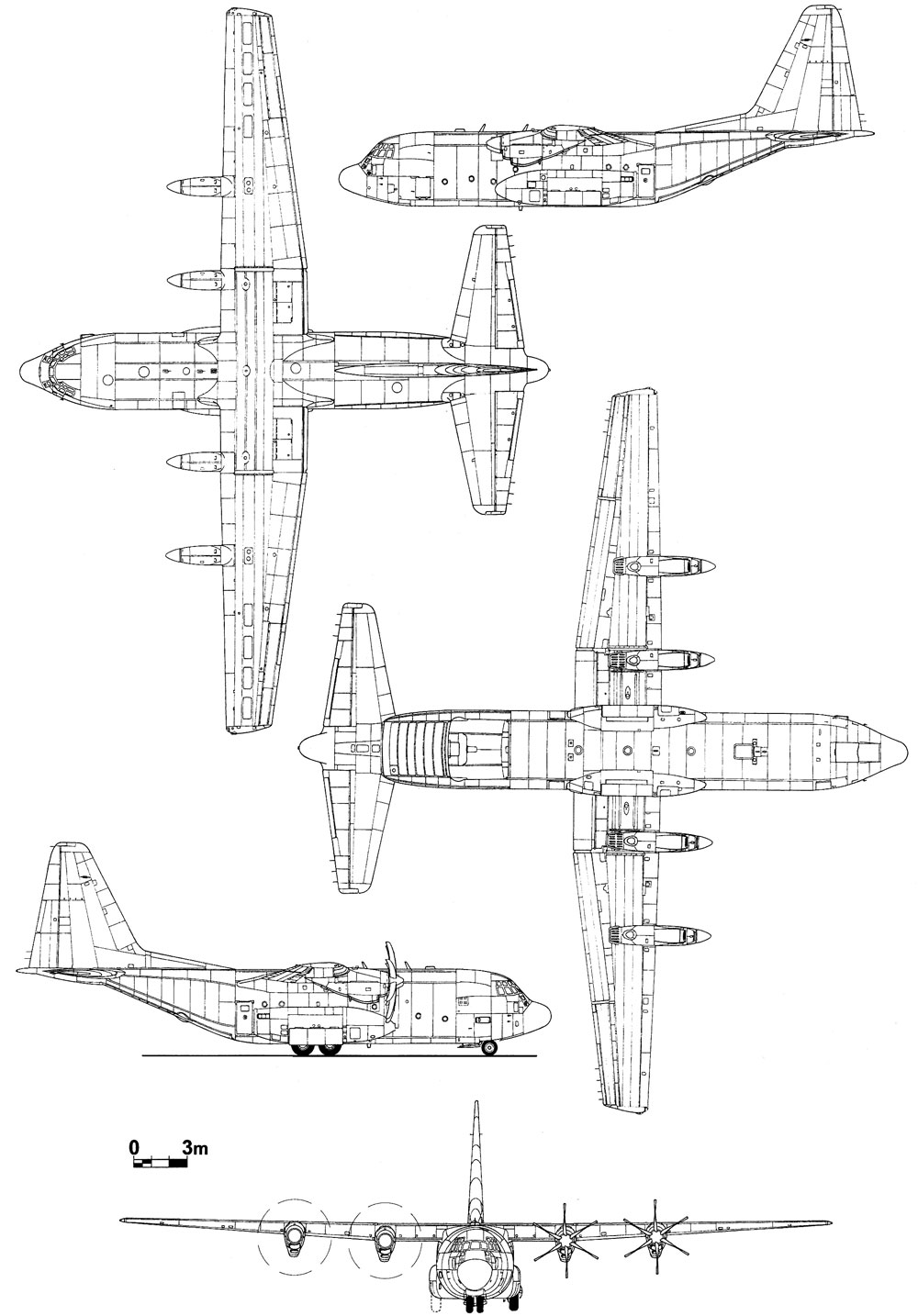In October 1963, the U.S. Navy decided to test out that very theory. With a wingspan of 132 feet and a landing width of just 252 feet on the carrier, the Hercules became the largest and heaviest aircraft to ever land and launch from a carrier.
The C-130 is without a doubt the ultimate workhorse of the United States Air Force (USAF) as well as over 60 other nations. Designed in the 1950s as the military’s first purpose-built, troop carrier, the Hercules has gone on to serve as everything from a gunship to a search-and-rescue aircraft, research vessel, aerial refueler and aerial firefighter. With more than 40 variants and continuous production for over 60 years, the Hercules is undoubtedly one-of-a-kind.

Serial Number: 57-0526
Crew: Five
Engines: Four Allison T56-A-7 turboprops; 4,050 horsepower each
Wingspan: 132 feet 7 inches
Length: 97 feet 9 inches
Height: 38 feet 3 inches
Weight: 2,892 pounds (empty); 135,000 pounds (gross); 175,000 pounds (maximum)
Speed: 328 mph (cruising); 384 mph (maximum)
Range: 2,090 miles
Service Ceiling: 41,300 feet
Armament: None
Cost: $22,900,000 (approximate)
This NC-130B-1-LM, S/N 57-0526, was the second B Model Hercules manufactured by Lockheed Corporation of Marietta, Georgia (Lockheed Number 3502). It was delivered to the USAF as a JC-130B in February 1959 and assigned to the 6515th Organizational Maintenance Squadron for flight testing at Edwards Air Force Base, California, in November 1960.
While with the 6515th, the aircraft was used for jet-assisted take-off (JATO) testing, then it was turned over to the 6593rd Test Squadron’s Operating Location No. 1 at Edwards. The plane spent the next seven years supporting the top-secret Corona Program. The J status and prefix were removed from the aircraft in October 1967.
In May 1973, the aircraft was transferred to the 6593rd Test Squadron of the 6594th Test Group at Hickam Air Force Base, Hawaii. There it was modified to perform mid-air retrieval of satellites and other objects as they floated back to earth beneath parachutes, under the Falling Star project and others. The aircraft was also used to recover high-altitude air samples in various locations around the world.
The plane was acquired by the 6514th Test Squadron at Hill Air Force Base in January 1987. While assigned with that unit, the plane was used as an electronic testbed and as a cargo transport. In January 1994, the aircraft was finally retired with over 11,000 flight hours and made its final move to Hill Aerospace Museum.
In October 1963, the U.S. Navy decided to test out that very theory. With a wingspan of 132 feet and a landing width of just 252 feet on the carrier, the Hercules became the largest and heaviest aircraft to ever land and launch from a carrier.
The C designation is used by the U.S. military to signify an aircraft whose primary role is that of cargo, airlift and logistics. In this case, the C-130 is one of the most versatile aircraft in the U.S. Air Force fleet, with the capability to fill a wide variety of roles and missions as needed.
The Hercules was designed from the ground up to carry a variety of loads; from troops to supplies, to offensive and logistical vehicles, as well as refueling missions, electronic warfare, missiles, bombs and even as an offensive platform—the infamous AC-130U “Spooky” gunship.